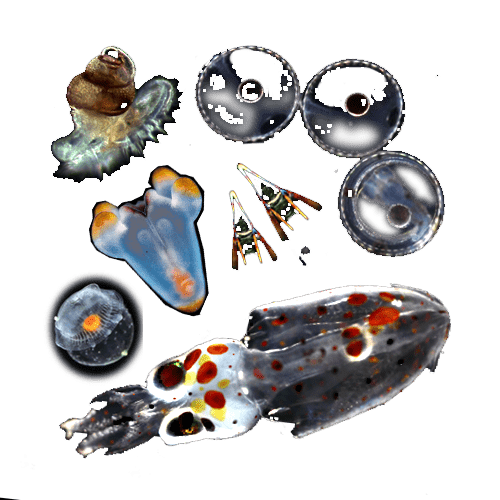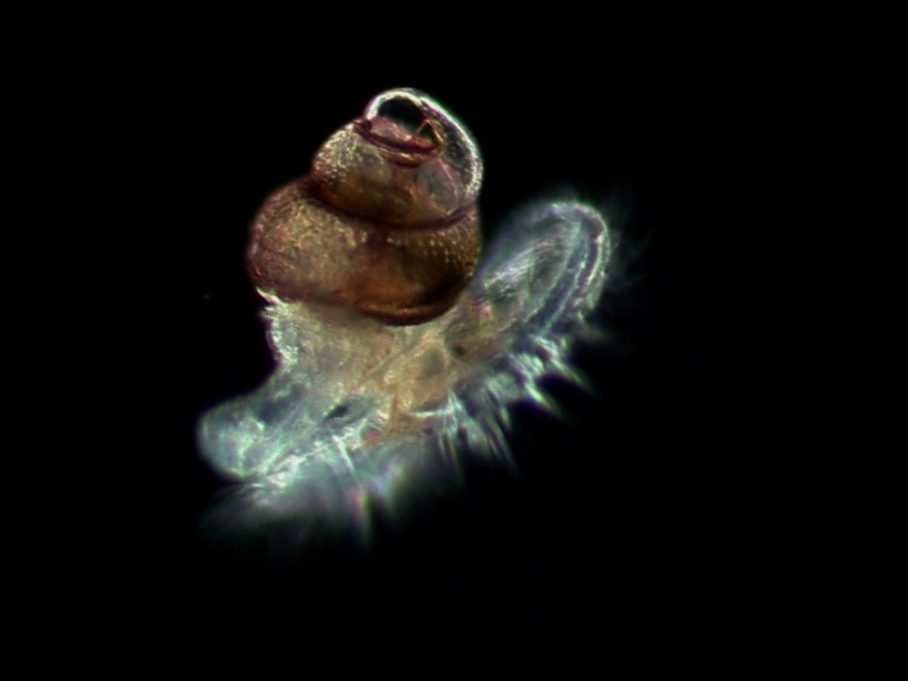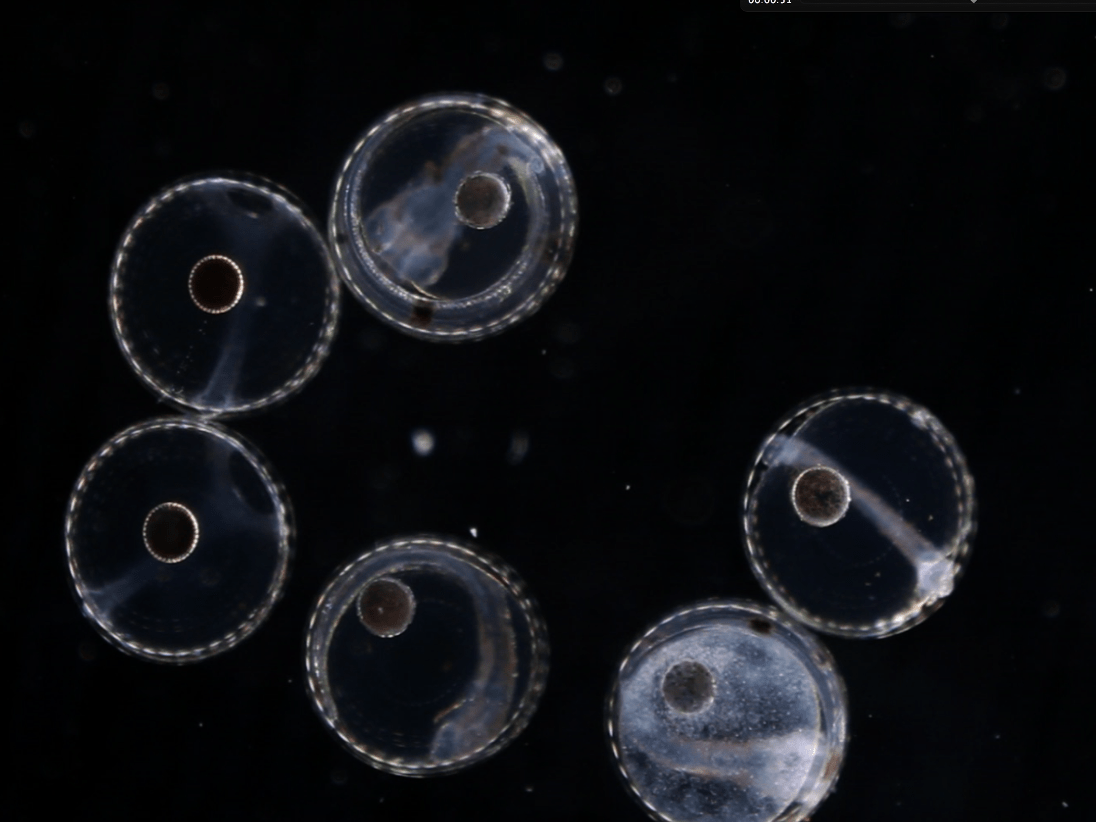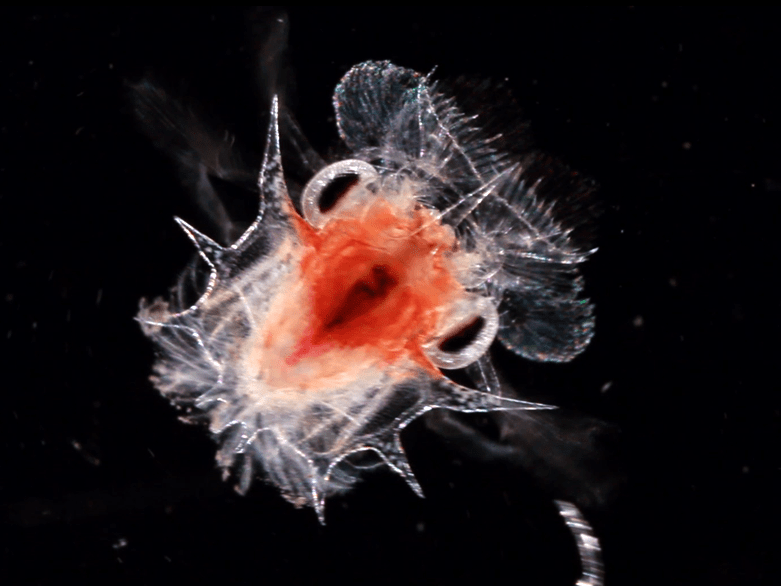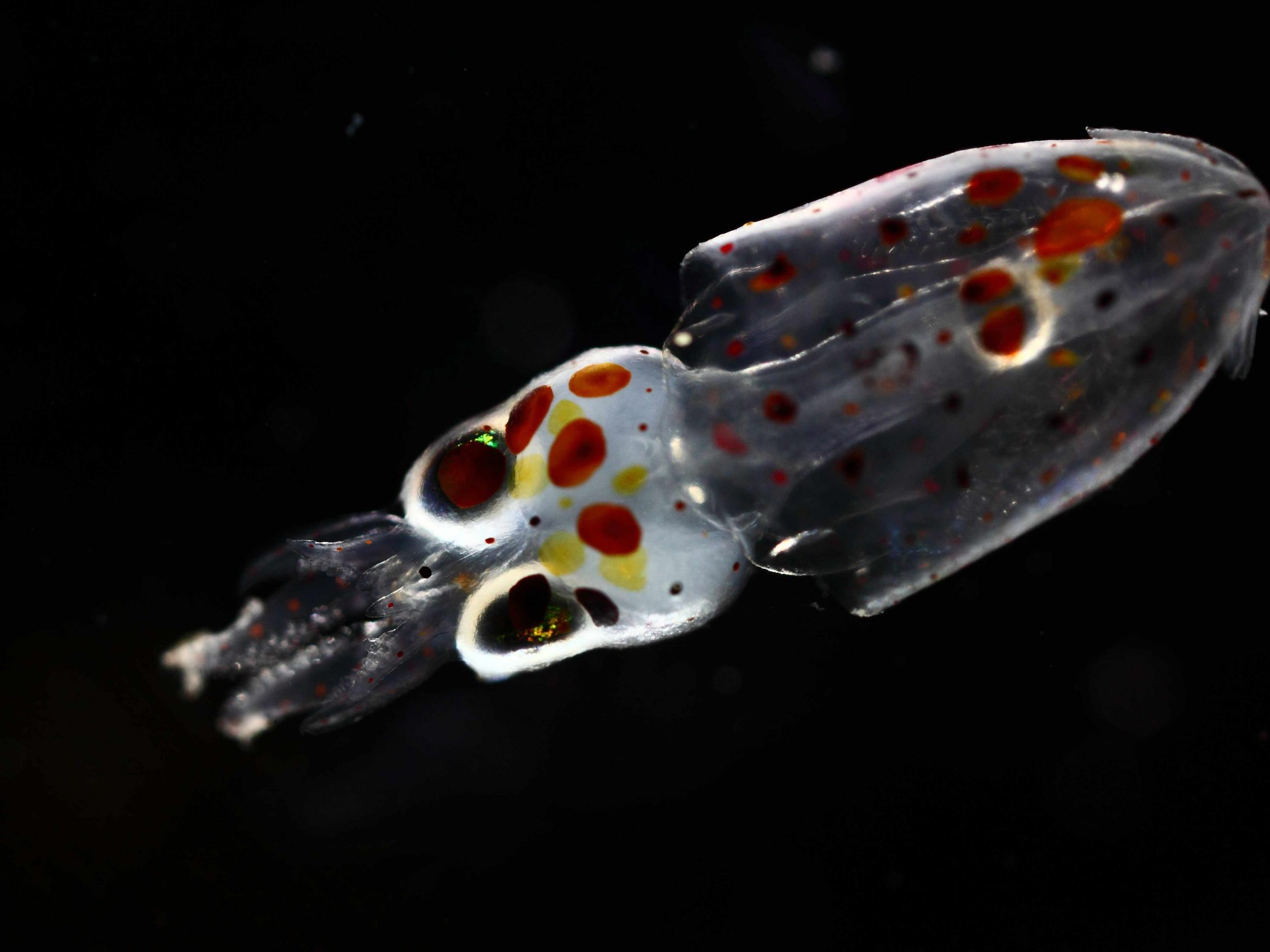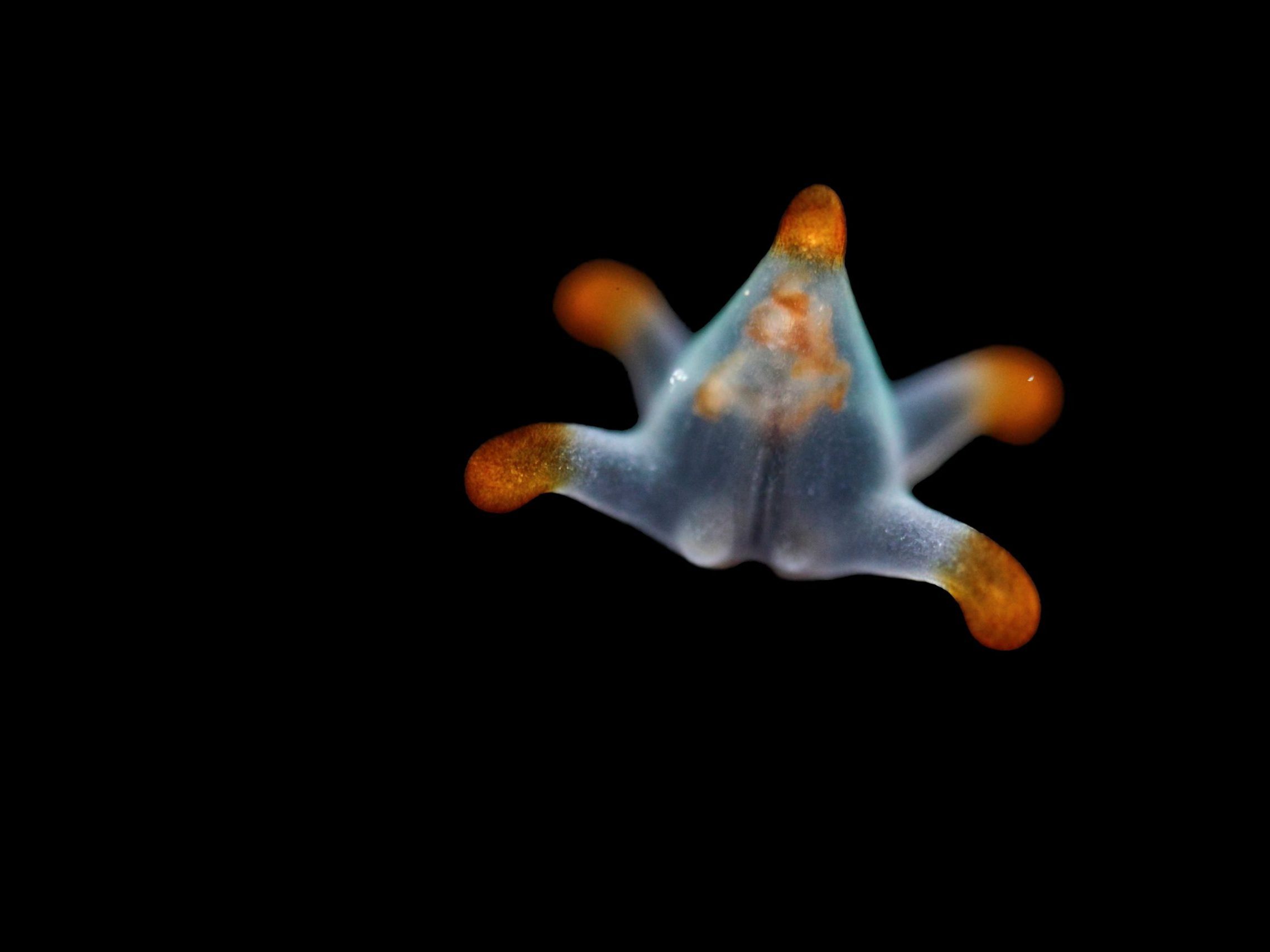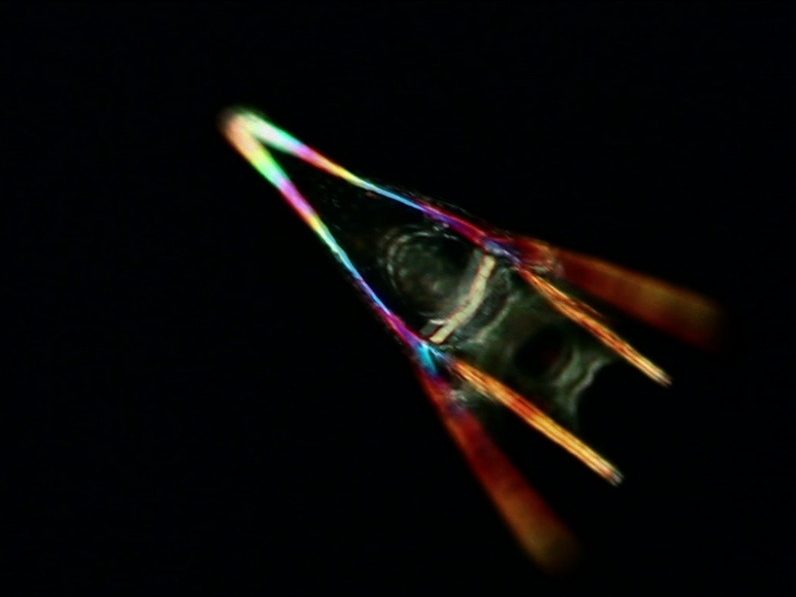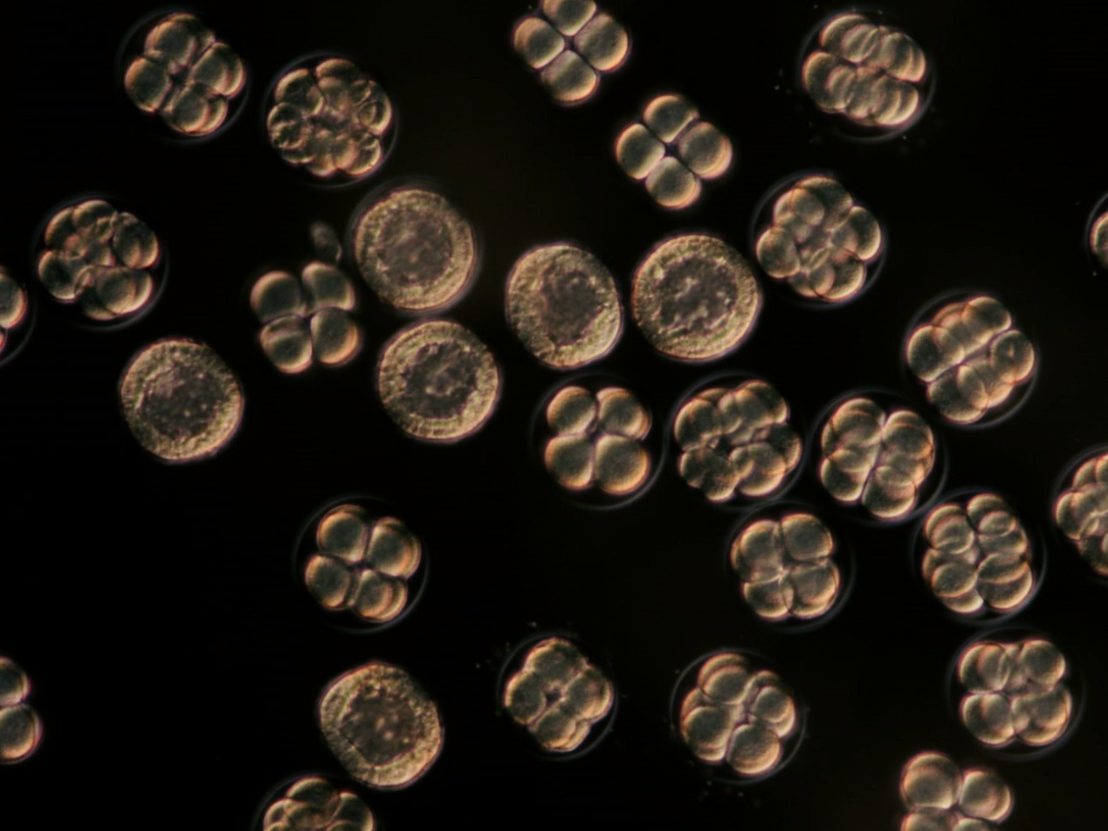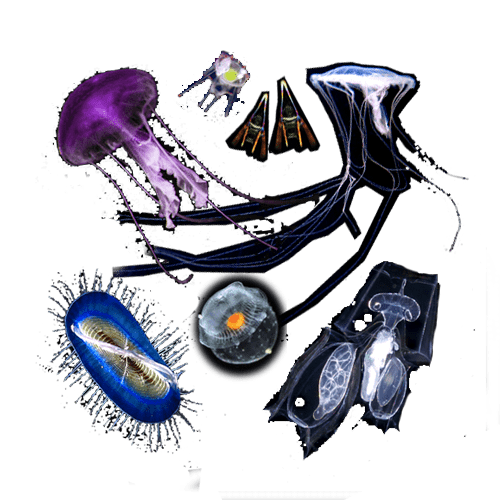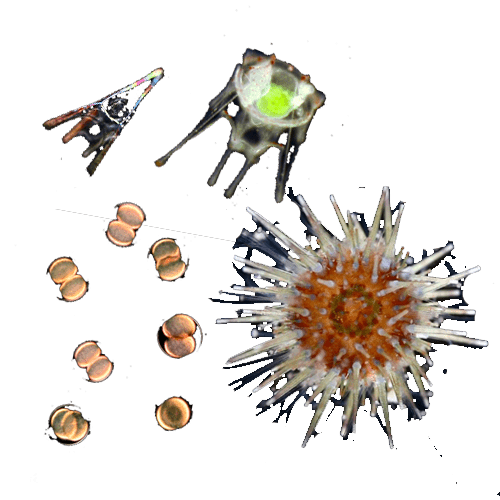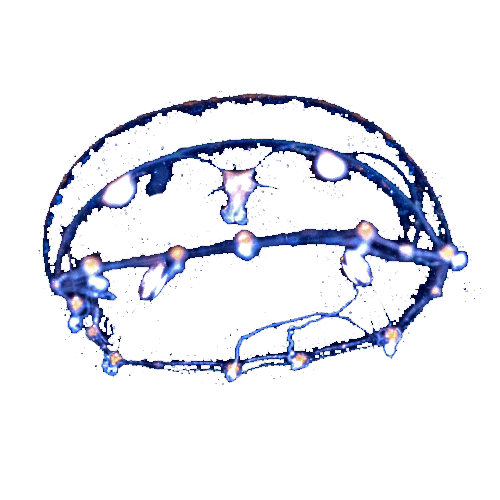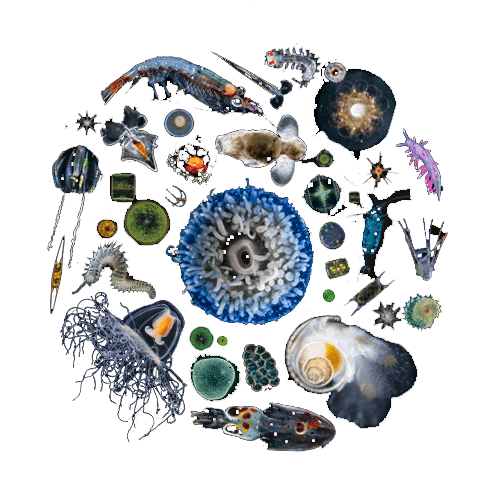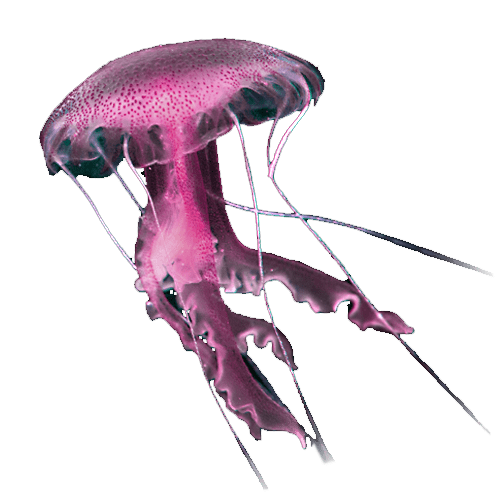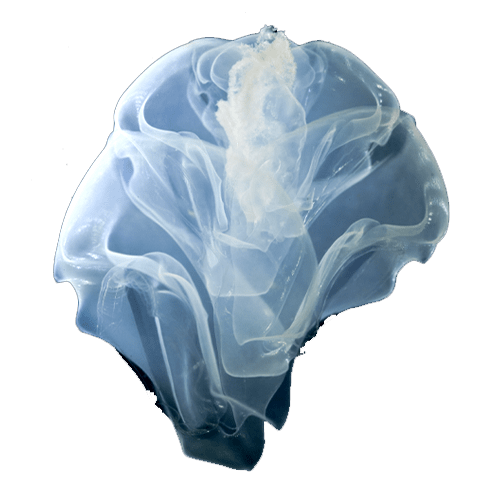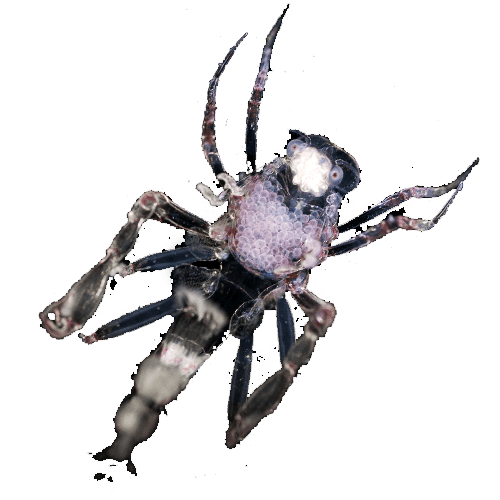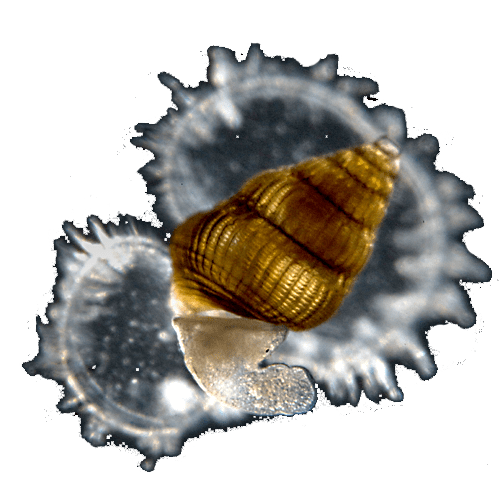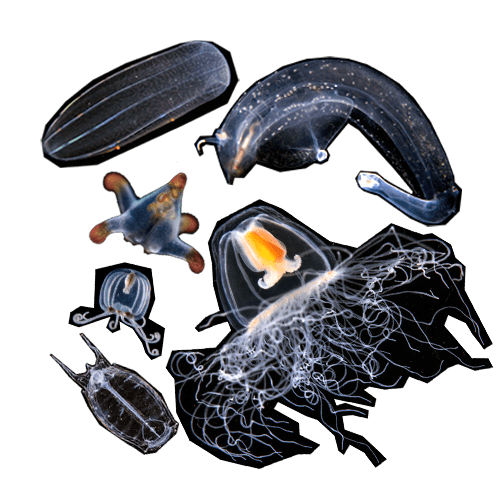In this episode
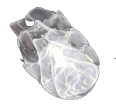 Siphonophores
Siphonophores ClytiaClytia hemispherica
ClytiaClytia hemispherica Velella larvaVelella velella
Velella larvaVelella velella Anthozoan larva
Anthozoan larva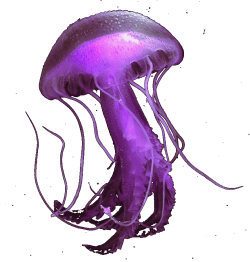 PelagiaPelagia noctiluca
PelagiaPelagia noctiluca
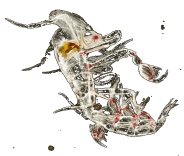 Phronima
Phronima
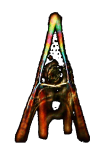 Sea urchin larvaeParacentrotus lividus
Sea urchin larvaeParacentrotus lividus
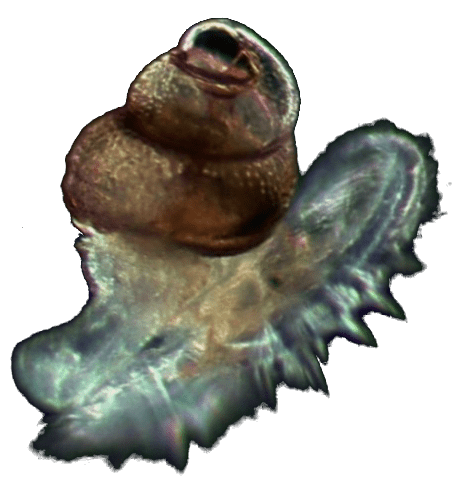 Veliger larva
Veliger larva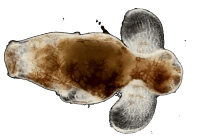 GymnosomePneumodermopsis paucidens
GymnosomePneumodermopsis paucidens
Photos
Narration
Larvae that hatched from their eggs a few weeks ago look like little monsters. The larvae from animals such as crabs, clams, sea urchins or sea anemones go through metamorphosis, a radical transformation during which they acquire the characteristics and behavior of their species.
If they survive, that is. These embryos and larvae are easy prey for jellyfish, shrimps or fish. They provide an abundant source of food, since many species lay millions of eggs in the open sea.
When fertilized, the eggs become embryos and then larvae. After a few weeks of drifting, only a few of the young survive to adulthood. That will be enough to perpetuate the species.
Share this on
Production
CNRS Images
Original Idea
Christian Sardet
Director
Noé Sardet
Scientific consultant
Claude Carré
Texts
Christian Sardet, Sasha Bollet, Véronique Kleiner
Images
Noé Sardet, Christian Sardet
Editing
Nicolas Mifsud
Sound mix
Thomas Huguet
Voice
François Briault
Director of production
Véronique Kleiner
Production assistant
Céline Ferlita
Translation
Theodore Rosengarten
Creative Commons Licence :
Attribution Non-Commercial
No Derivative

